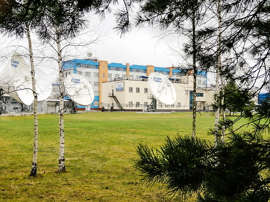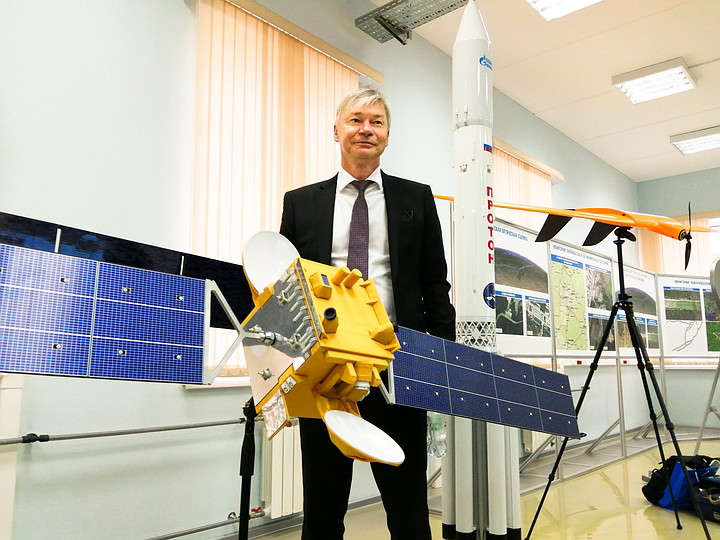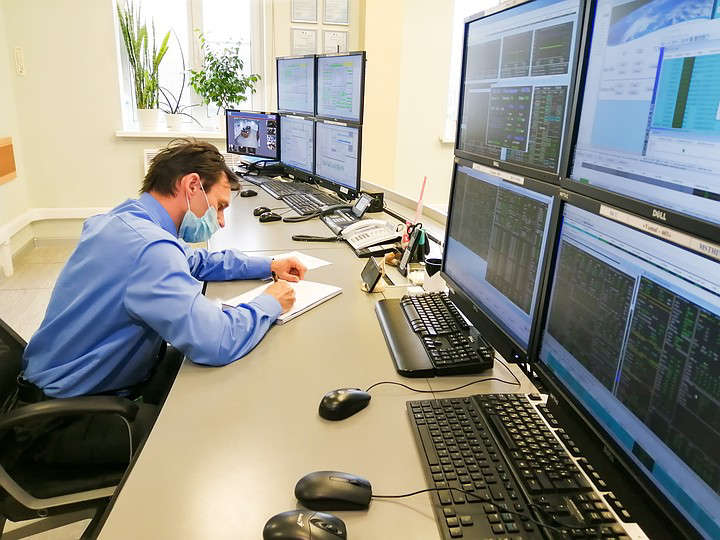
Where are the spacecraft controlled from? Most of us will only name the MCC in Korolev. But he is not the only one: there are flight control centers in the vicinity of Moscow, and one of them is located in Shchelkovo.
On a cosmic scale, the antenna field here is small. And the “saucers” are more modest than those that we are used to seeing in films about space flights. There is no movement either: the antennas are completely motionless, and the axis of each of them for years “drills” its point in the firmament. This can be explained simply: the satellites are three tens of thousands of kilometers from the Earth and fly in a geostationary orbit with the angular velocity of the planet's rotation. That is, relative to its surface, they are at the same point all the time.
For example, the Yamal-402 satellite “hangs” over Madagascar. It is one of five communication satellites operated by Gazprom's subsidiary, Gazprom Space Systems. The oldest of its active satellites is Yamal-202. This year he will celebrate his majority.
– It has been in orbit for 18 years. Typically, the service life of satellites does not exceed 15 years. Not because they fail, but because technologies are rapidly developing, and more modern devices need to be put into orbit, – says Igor Kot, Deputy General Director for Business Development of GKS, – In 2019 we sent Yamal-202 to another position in orbit, transferring all its networks to the more powerful Yamal-601. But the long-liver is still in the ranks, and I think he will be able to earn money for us for another 3-4 years.

Five satellites provide telecommunication channels not only to Gazprom, but also to other customers. About 100 countries use the services of the Russian space operator. According to Igor Kot, 37% of the company's revenue comes from foreign sales.
Requests for the Internet, communications, television, and other data packages are constantly growing in the world. Therefore, more and more powerful devices are sent into space. As the chief engineer of the company, Yuri Banit, said, the most powerful satellite of the Russian orbital constellation Yamal-601 is capable of transmitting an information flow at the level of 34 gigabits per second.
Gazprom, in partnership with Roscosmos, plans to create a radar geotechnical monitoring system. The technology has been tested by the company at its facilities: the Power of Siberia gas pipeline, the North Stavropol underground gas storage facility and the Dzuarikau – Tskhinval high-altitude trunk gas pipeline. Corner reflectors are installed on these objects. For example, there are 835 of them on the Power of Siberia. A radar satellite sees them and records the slightest changes in the position of the reflectors with millimeter precision. This means that in the event of an unforeseen and imperceptible surface deformation, the Earth will already know about the problem. And they will take measures to prevent a man-made accident.

True, for these purposes Gazprom uses data from foreign satellites – we do not yet have such a targeted orbital constellation.
Earth remote sensing satellites can quickly and several times a day monitor foci of forest fires and greenhouse gas emissions, ice conditions along the Northern Sea Route, flood areas, and much more.
A significant part of major man-made accidents is associated with geodynamic processes that change the geometry of the earth's surface, leading to the destruction of structures, entailing serious economic, environmental and social consequences.
President Vladimir Putin called it an important state task to minimize the risks of man-made accidents at hazardous production facilities. Gazprom and Roskosmos proposed to create a geotechnical monitoring system in Russia that would operate throughout the country. By the way, to ensure full coverage, a constellation of 6 satellites is enough. As you can see, it is not a super task, but it still requires a systemic solution.
That is why a meeting was held in Shchelkovo with the participation of representatives of Gazprom, Roscosmos, ministries and industrial corporations, at which the initiative was presented.
The meeting participants supported her.
– We agreed that an interdepartmental working group will be created under the Coordination Center on the basis of the Government Analytical Center. This working group will jointly form the terms of reference for the systems to be created, and all of this will be included in the Sphere program, ”summed up the meeting, Yuri Urlichich, First Deputy General Director for Development of the Orbital Constellation and Prospective Projects of Roscosmos.
“Sphere” is a program for the integrated development of space information technologies of “Roskosmos”, which provides, inter alia, the creation of a multi-satellite space radar surveillance system. And yet – the production of satellites for these purposes. While Russian territories are being monitored by foreign satellites. But we will soon get rid of import dependence: a production line is being built on the territory of Gazprom Space Systems in Shchelkovo. The launch of the enterprise to create satellites is scheduled for 2022.

